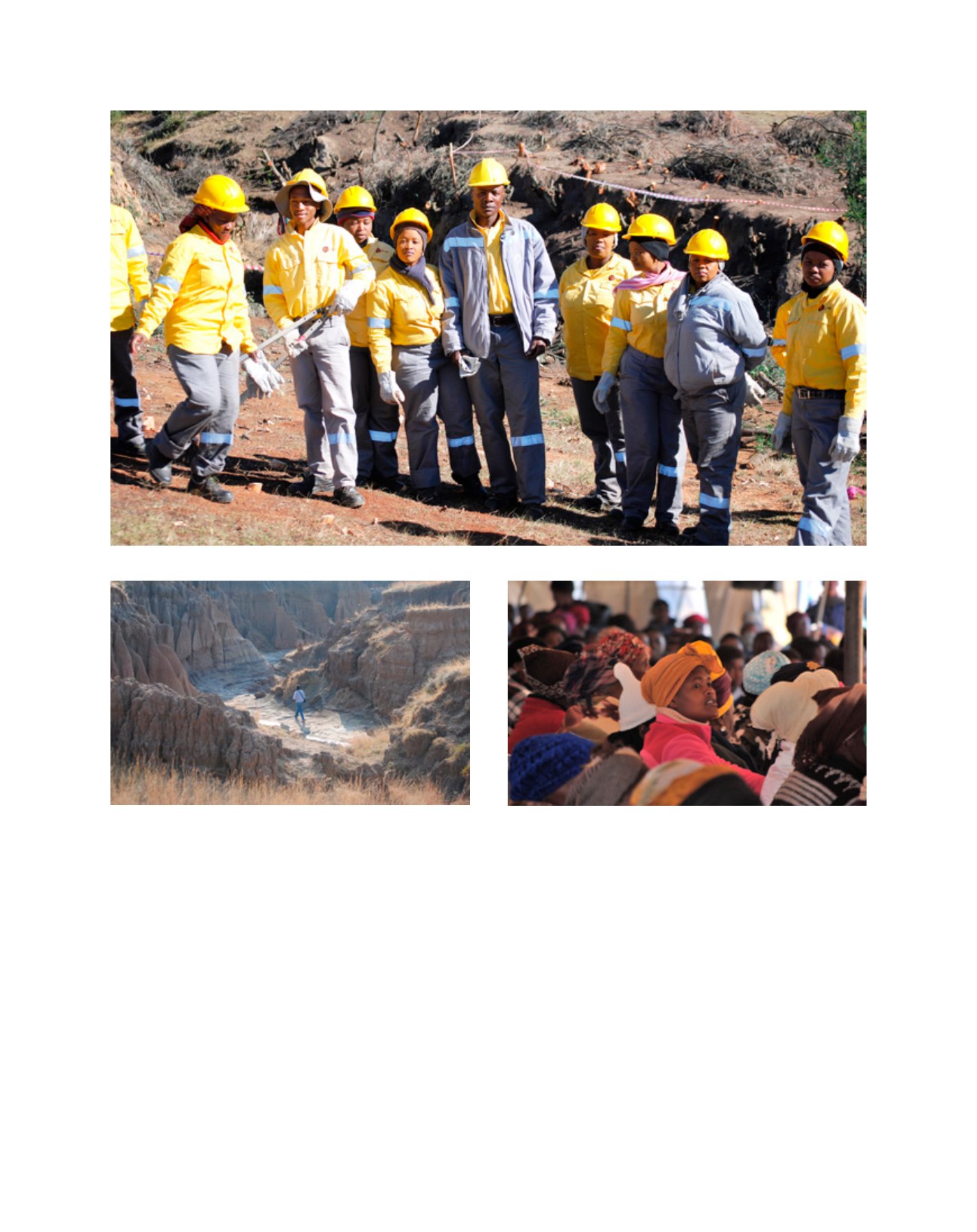

[
] 86
access
to
water
and
sanitation
for
all
The sheer scale of degradation in Ntabelanga catchment
content of soils, restoring wetlands, and protecting the banks
of rivers and riparian zones. In this way, ecological goods and
services will be improved, supporting the success of alterna-
tive livelihoods and the well-being of land users.
The provisional set of research programmes and interact-
ing management actions are designed to build more resilient
societies which can adapt and hopefully flourish in a chang-
ing future. In the long-term the NLEIP will strive towards
sustainable land use management across the catchments.
NLEIP is a collaborative venture into polycentric govern-
ance and the project framing is social-biophysical (or
social-ecological as it was termed in the formative initia-
tives) and systemic (holistic) in nature, and centres around
local livelihoods especially in the ex-homeland areas of
the catchment. Although the NLEIP began in a top-down
manner, efforts are now being made to secure a meaningful,
even where possible central, participatory position for local
resource users. The restoration plans being developed by the
science and management teams don’t have corrective actions
definitively identified, only some provisional ones.
The actual restoration planning is, at the time of writing,
actively being done with the communities living in the
catchments. The process began as a biophysically-centred
sedimentation and rehabilitation plan but evolved into focus-
ing on social-biophysical linkages and understanding the
requirements of the people living in the landscape. In addi-
tion a commitment to pragmatic interfacing with the many
realities on the ground, such as local power structures and
governmental schedules has been investigated and built into
the framework adopted by the project.
It is the NLEIP’s view that, without these social and
other contextual considerations properly incorporated, any
biophysical design or restoration action will very likely be
unsustainable.
Programme participants at an invasive alien plant clearing site as part of the Firewise land user incentives project, Upper Umzimvubu
A community information session, Upper Umzimvubu
Image: DEA RSA
Image: DEA RSA
Image: DEA RSA
















